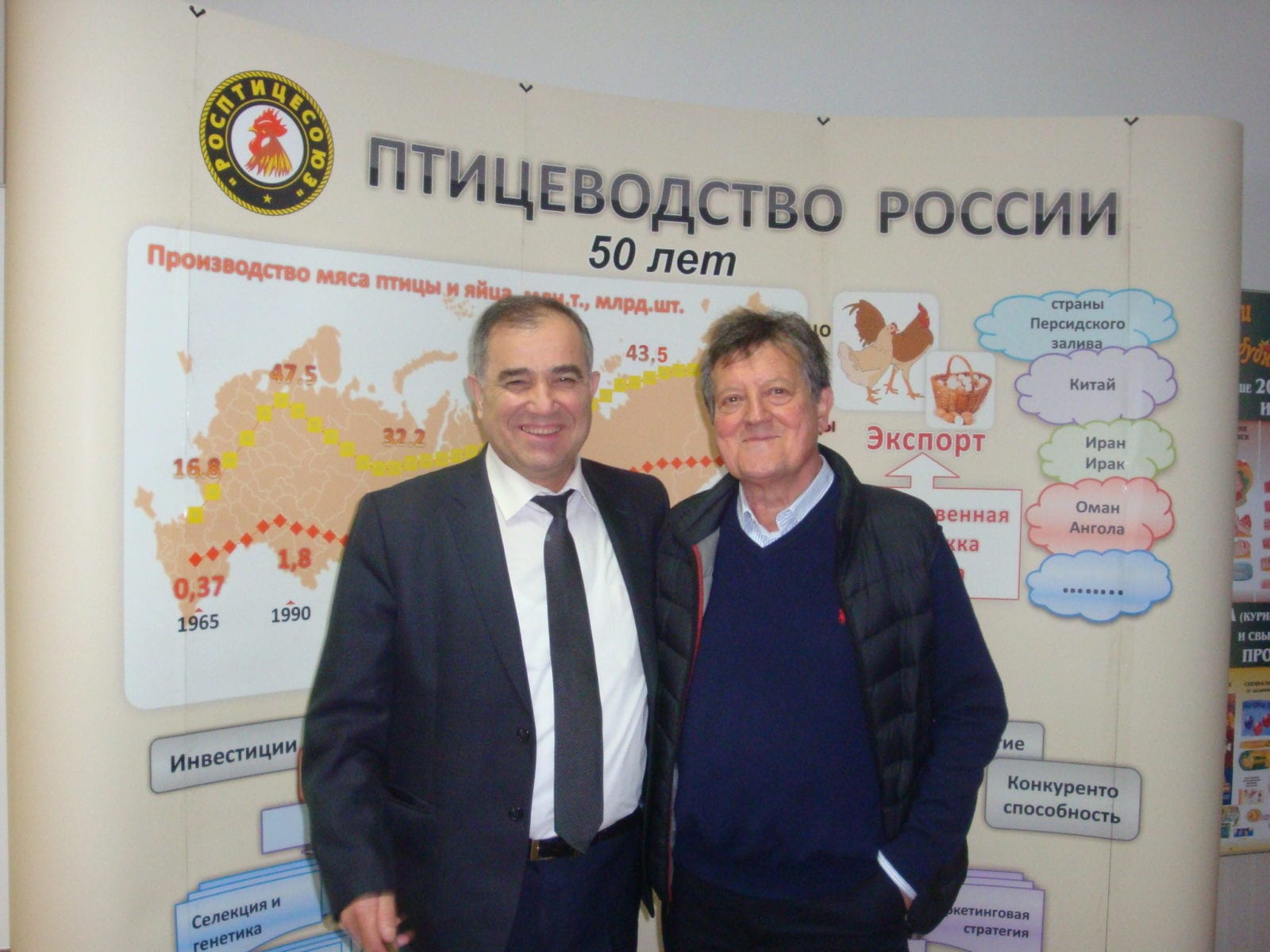USSEC Attends Poultry Seminar in Russia
- Category:
- Animal Utilization
- General News

At the invitation of the leading Russian Poultry Research Institution - Federal Scientific Center, All-Russian Research and Technological Poultry Institute (VNITIP), USSEC attended a technical poultry seminar on December 5 and 6 in Sergiev Posad, Russia, about 70 kilometers outside Moscow.
USSEC consultant Dr. Gonzalo Mateos of Spain was accompanied by local consultant Dr. Maria Domoroshchenkova at the seminar, "Modern Approaches to Feeding of High Productive Poultry Crosses, Control of Safety of Compound Feeds and Biologically Active Additives: New Technologies in Feed Production."
Over the last five years, USSEC consultants have become regular and respected visitors of such seminars, sharing modern global and European trends in poultry production; nutrition and feeding programs; new developments in soy feed additives production and quality control; and nutritional value and benefits of U.S. Soy versus other protein sources with Russian customers.

About 70 people attended the current seminar. Participants were predominantly representatives of feed mills, poultry farms, feed additive and vet preparations companies, and poultry scientists from different regions of Russia, Belarus and Kazakhstan. The organizers stated that many local customers registered for the seminar to attend the presentation of Dr. Mateos.
Dr. Mateos’ presentation was titled “Energy Evaluation of Ingredients for Poultry Feeds - Pros and Cons of Available Methods.” Alongside energy evaluation problems and equations and other poultry feeding questions/issues, he demonstrated benefits of soy products in poultry feeding and provided tips and scientific data for understanding of quality differences in soybean meal (including differences in origin) and the impact on cost of poultry diets. The economics and benefits of the use of U.S. versus South American soy products were appreciated and recognized by the audience.

As evidenced by the number of questions and reactions, Dr. Mateos’ presentation was well received. Although the organizers of the seminar allocated two hours for Dr. Mateos’ talk, discussions continued after the session, demonstrating that the topics presented were of high interest for local customers.


At the request of local scientific research attendees, Dr. Mateos had a dialogue and Q&A session with Russian specialists after his keynote plenary presentation focusing on the design of an experimental pattern of research work meeting modern statistical validation and publication requirements.


Local poultry farms are the principal users of soybean meal in Russia compared to other animal producers. Russia is the world’s fourth largest producer of the poultry meat and the sixth largest producer of eggs. In 2016, Russia produced more than 4.65 million metric tons (MMT) of poultry meat in slaughter weight (the estimate for 2017 is 5 MMT) and more than 43.5 billion eggs.
Poultry products are very important for Russian customers. Although Russia has reached self-sufficiency in poultry production, it looks for the development of export supplies and for the development of deep processing technologies of poultry meat and eggs, which means that the demand in high protein feeds and energy sources will continue to grow in Russia. With the current average share of cereals up to 68-70 percent in feeding ratios in Russia, there is an evident potential for growth of usage of soybean meal in poultry diets.
The education of local customers on modern feeding programs, the nutritional benefits of soybean meal versus other protein sources, and on the feasibility of usage of soybean meal in poultry diets is very important for the development of the soy market in Russia. USSEC’s marketing efforts are beneficial for the promotion of soy additives in local poultry feeding ratios and for building the demand for U.S. Soy.